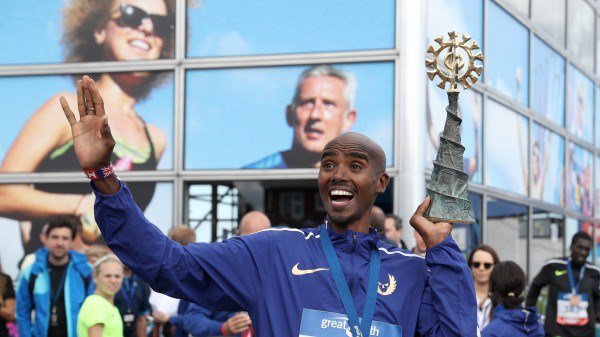Mo Farah has shrugged off the leaking of his personal medical records, insisting he has nothing to hide.
The information, which relates to two therapeutic use exemptions (TUEs) he was granted so he could take medicine that would otherwise be banned, was stolen from the World Anti-Doping Agency’s (Wada) data storage system.
Farah is among 66 international athletes who have had their TUEs published online by the so-called Fancy Bears, with 26 in Monday’s batch.

Rafael Nadal and Justin Rose were the other big names released with Farah, joining last week’s high-profile cast that included Chris Froome, Sir Bradley Wiggins and tennis sisters Serena and Venus Williams.
But just as Wiggins still faces questions over three injections of a powerful corticosteroid that he had not disclosed before, the first of Farah’s two TUEs became the focus of the most recent leak as it was for the same drug prescribed to Wiggins – triamcinolone – and it seemed he had previously admitted to only one TUE.
That exemption was for a saline drip and two pain-killers that the 33-year-old Olympic star was given after he collapsed in Park City, Utah, where he was training at altitude in 2014.
He said this was his only TUE at a press conference in Birmingham last June when asked about his coach Alberto Salazar, who remains under investigation by the United States Anti-Doping Agency, but it has since emerged that he did mention the 2008 triamcinolone injection a few weeks later in an interview with Sky Sports News.

Responding to questions about this earlier TUE, a spokesperson for Farah said: “As Mo has previously stated, he has got nothing to hide and doesn’t have a problem with this or any of his (anti-doping administration and management system) information being released.
“Mo’s medical care is overseen at all times by British Athletics and over the course of his long career he has only ever had two TUEs.
“The first was back in 2008 for a one-off anti-inflammatory treatment to an injury. The second was in 2014 when Mo collapsed and was airlifted to hospital for emergency care, which consisted of painkillers and being placed on a drip.”
It is understood that the first TUE – which happened before he started training with Salazar in the US, hence the confusion over his 2015 answer to questions about medical exemptions while working with the coach – was to treat a flare-up of a back injury shortly before a mile race in Newcastle.
There is no suggestion Farah, or any of the other athletes named by the Fancy Bears, have broken any anti-doping rules.

Justin Rose’s TUE is for an anti-inflammatory drug he took to treat a back injury that caused him to miss several weeks of action in May and June, while almost all the other British TUEs are for fairly routine asthma and allergy prescriptions.
The 30-year-old Nadal is probably the most eye-catching name among the rest of the athletes named by the Russian cyber terrorists on Monday, with his TUEs being for anti-inflammatory injections in September 2009 and shortly before he withdrew from London 2012 with tendinitis in his knees.
Like the British athletes, the vast majority of these TUEs are for asthma medication and many of these drugs no longer require special permission as they were reclassified by Wada in 2010.






